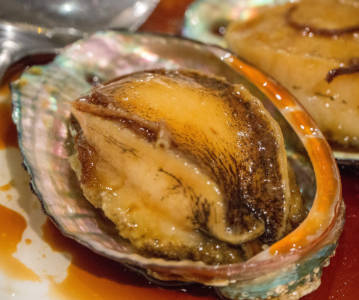All Ingredients
olive oil
ranked from highest to lowest quality; extra-virgin, superfine, fine, virgin, and pure.
Learn moreOlives
A staple of Mediterranean cuisines, olives are most often eaten out of hand, though cooks also use them to flavor everything from pizzas to martinis. Raw olives must be cured before they can be eaten, and the curing medium--usually lye, brine, or salt--affects their flavor and texture. So too does the olive's degree of ripeness when it's picked. Green olives are picked while unripe, which makes them denser and more bitter than brown or black olives, which stay on the tree until fully ripened. Olives become bitter if they're cooked too long, so always add them to hot dishes at the last minute. Opened cans or jars of olives should be refrigerated, but some olives can be stored at room temperature if they're submerged in brine or olive oil.
Learn moreonion
Onions (also called dry onions or bulb onions or common onions) are often separated into two categories: storage onions and sweet onions. Storage onions are more pungent and flavorful than sweet onions, and they're best if cooked before eating. They also store well and so are available year-round. Sweet onions have a lower sulfur content are usually served raw or lightly cooked. They're easiest to find from April to August. Onions should be firm and heavy for their size. Avoid onions that have sprouted or that have an odor, or that have green or moldy blemishes. If you're prone to crying while cutting onions, try chilling them first, then peeling them under running water. Always cook onions over low or medium heat, since they become bitter when cooked at high temperatures. Store them in a cool, dry place (not in the refrigerator). To learn about different varieties of onions, click here.
Learn moreonion flakes
These are onions that have been chopped and then dehydrated. They lack much of the pungency of fresh onions, but they're convenient and great for backpacking.
Learn moreopal basil
Opal basil has purple leaves and a longer shelf life than sweet basil, but the two can be used interchangeably in most recipes.
Learn moreorange
Most American oranges are produced in Florida and California. Florida oranges are juicier, and better suited to squeezing, while California oranges segment more easily and are better for eating out of hand. The best oranges are smaller, thin-skinned, and heavy for their size.
Learn moreorange bitters
Orange bitters is made from sour orange peels. Popular brands include Angostura and Fee. A dash or two will perk up your martini, barbecue sauce, chocolate dessert, and seafood.
Learn moreorange flower water
This is distilled from bitter orange blossoms, and it's used to flavor drinks, salads, and desserts. Look for it in Middle Eastern markets and specialty shops.
Learn moreorange liqueur
The best (and driest) is Grand Marnier, followed by Cointreau, curaçao, and--the sweetest of them all--triple sec.
Learn moreorange marmalade
This is made by boiling the fruit and peel of oranges with sugar, pectin, and water. It manages to be bitter, sour, and sweet all at once, which many people find delightful.
Learn moreorecchiette
These "little ears" are pieces of Italian pasta shaped like tiny ears or bowls.
Learn moreoregano
Oregano is a popular herb in Mediterranean countries, where it's often used to season tomato sauces, meat dishes, and pizzas. Mexican oregano has a mintier taste than ordinary oregano. If you can't find it fresh, dried oregano is a good substitute.
Learn moreOreo® cookie
These cookies have a creamy vanilla filling sandwiched between two chocolate wafers. They're addictive all by themselves, but cooks also crush them and use them to make pie crusts or ice cream toppings.
Learn moreorgeat
This sweet almond-flavored syrup is used in many mixed drinks. Look for it in liquor stores. To make your own: See the Almond Syrup recipe on the ichef website.
Learn moreorzo
This pasta is shaped like grains of barley. It's often used as a bed for sauces or in soups.
Learn moreOssau-Iraty cheese
This little-known Basque cheese is made from raw sheep's milk, and it's creamy, nutty, and mellow.
Learn moreossetra caviar
In recent years, over-fishing in the Caspian Sea has greatly depleted sturgeon populations. Please consider using caviar and roe from more abundant species until the Caspian Sea sturgeon populations can recover. Ossetra caviar is brown and more strongly flavored than beluga caviar. Don't confuse ordinary ossetra with the rare and expensive golden ossetra = imperial caviar. If substituting an inferior caviar, consider perking it up with a splash of fresh lemon juice. For substitutions for caviar in general, click here.
Learn moreostrich
Ostrich looks and tastes like a cross between beef and chicken, and it's relatively low in fat.
Learn moreouzo
This potent, anise-flavored Greek liqueur is usually mixed into water, turning it cloudy.
Learn moreoyster
The French like to serve these raw in the shell, with just a squirt of fresh lemon juice, but they can also be fried, grilled, or gently poached. If you eat them raw, you'll need to shuck them first; an oyster knife comes in handy for this. Storage: Unopened canned oysters can be stored for up to a year in a dry, cool place. Once opened, it will keep for up to two days if you wrap it well and refrigerate it.
Learn more





































































































































































































































































































































































